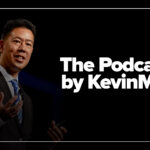Most people could think of several good reasons to move to Hawai’i and work in health care. It’s a beautiful gem of a place with welcoming people and Aloha Spirit. Why save up for an occasional Hawaiian vacation when you could be enjoying sunny beaches, warm waters, and lush jungles year-round? The problem is that entry into Hawai’i’s health care system has largely become a revolving door of those who did not fully appreciate the downsides of living in paradise.
My wife and I moved to Hawai’i Island (also known as the Big Island) from Denver in December 2021. The relocation took months of preparation and significant financial commitment, so it amazes me to see the number of health care workers who relocate to Hawai’i only to move back within one year. Why is it so difficult to entice health care workers to stay?
The cost of living is sky-high. The current median home price on O’ahu is over $1 million. A typical one-bedroom apartment rents for over $2,000 a month. Grocery prices are at least 20 percent higher than the national average, since 90 percent of Hawai’i’s food is imported. Gasoline runs about $1.50 more per gallon than elsewhere in the U.S., and electricity is more than three times as much per kilowatt-hour.
You may not make as much. Physician salaries are relatively low in Hawai’i, especially when adjusted for cost of living. The state is largely dominated by a handful of local health care organizations with a smattering of private practices. The very high cost of doing business here makes it extremely difficult for solo and small-group practices to succeed. A 4 percent state general excise tax on all medical services doesn’t help. Additionally, opportunities may be more limited on O’ahu, where about three quarters of the entire state’s health care workforce live and work.
Health care resources are harder to access. Most places in the U.S., when a patient at a small critical access hospital needs a higher level of care, they can be driven by ambulance to the closest large city and stabilized in the emergency room. Outside of O’ahu, all the Hawaiian islands formerly known as the “outer islands” (the friendlier term “neighbor islands” has been popularized in recent years) must send their sickest patients by air. Hospitals on O’ahu run at or near capacity most of the time, and they only accept transfers when a bed is open. Tropical storms can limit transfer windows. While there is such a thing as a water ambulance, it would take hours of travel over rough seas to move between islands this way.
The hospital I cover in Kona is 50 years old. It has no cath lab, no interventional radiologist, no neurosurgeon, and no vascular or cardiothoracic surgery. There is one larger hospital on the Big Island that has some of these resources, but it tends to run full. Even services that are covered may not be staffed consistently. As an example, I am the only infectious disease physician for Kailua-Kona and surrounding areas, so if I get sick or go on vacation, there is no backup. Specialists are generally hard to come by on neighbor islands, and most people fly to O’ahu for specialty care.
It’s very isolated. Geographically, Hawai’i is the most isolated population center in the world. The islands are over 2,000 miles from the U.S. mainland, and even the shortest flights are almost six hours long. During Daylight Saving Time (which Hawai’i does not observe), there is a six-hour time difference between Hawai’i and the East Coast. For those with friends and family on the mainland—particularly those with older relatives developing health problems—it can be challenging being so far away.
Don’t expect all of the usual amenities. Power outages are relatively common, especially on neighbor islands. Water comes mostly from underground aquifers, and, at least in my community, water restrictions are frequently in place due to low rainfall and/or pump malfunctions on the wells.
Many national chains of retail stores and restaurants do not operate in Hawai’i due to its higher costs and lower profit margins, so you may not have access to your preferred shopping and dining. Online shopping is somewhat limited by restrictions on transporting hazardous materials across the Pacific. When you can purchase online, don’t expect two-day shipping—two-week shipping is more in the ballpark.
There are no professional sports teams from the major leagues in Hawai’i, so if attending such sporting events in person is a major part of your leisure time, Hawai’i may not be for you. Big-name music artists might stop in Honolulu occasionally, but we generally do not see many large national productions come through the state. When they do, these venues are almost always on O’ahu, so those on neighbor islands will have to fly to see them.
Public transit is underdeveloped, and most people rely on private vehicles. Roads are fewer and smaller because construction costs are so high, leading to more traffic congestion than you might expect for the small population. Auto repair facilities are in short supply and high demand, and it can take weeks to get necessary parts from mainland suppliers.
Conclusion
Despite all the issues above, I love living and practicing medicine in Hawai’i. Delivering health care here is a unique challenge that requires patience, creativity, and ingenuity, but it rewards with an idyllic setting and grateful people from a wonderful cultural tapestry experienced nowhere else in the world. In this small, close-knit community with limited resources, a single health care provider can have an outsized impact.
Five years ago, Hawai’i was a pipe dream to me. I was looking for a new career path, but this one did not seem like a feasible consideration. I suspect that more health care workers out there do not yet realize that Hawai’i would be a good fit. By leading with the litany of drawbacks, I hope to help the right people find their way to a long and fulfilling health care career in Hawai’i.
Clayton Foster is an infectious disease physician.























![Pediatric respite homes provide a survival mechanism for struggling families [PODCAST]](https://kevinmd.com/wp-content/uploads/Design-1-190x100.jpg)
